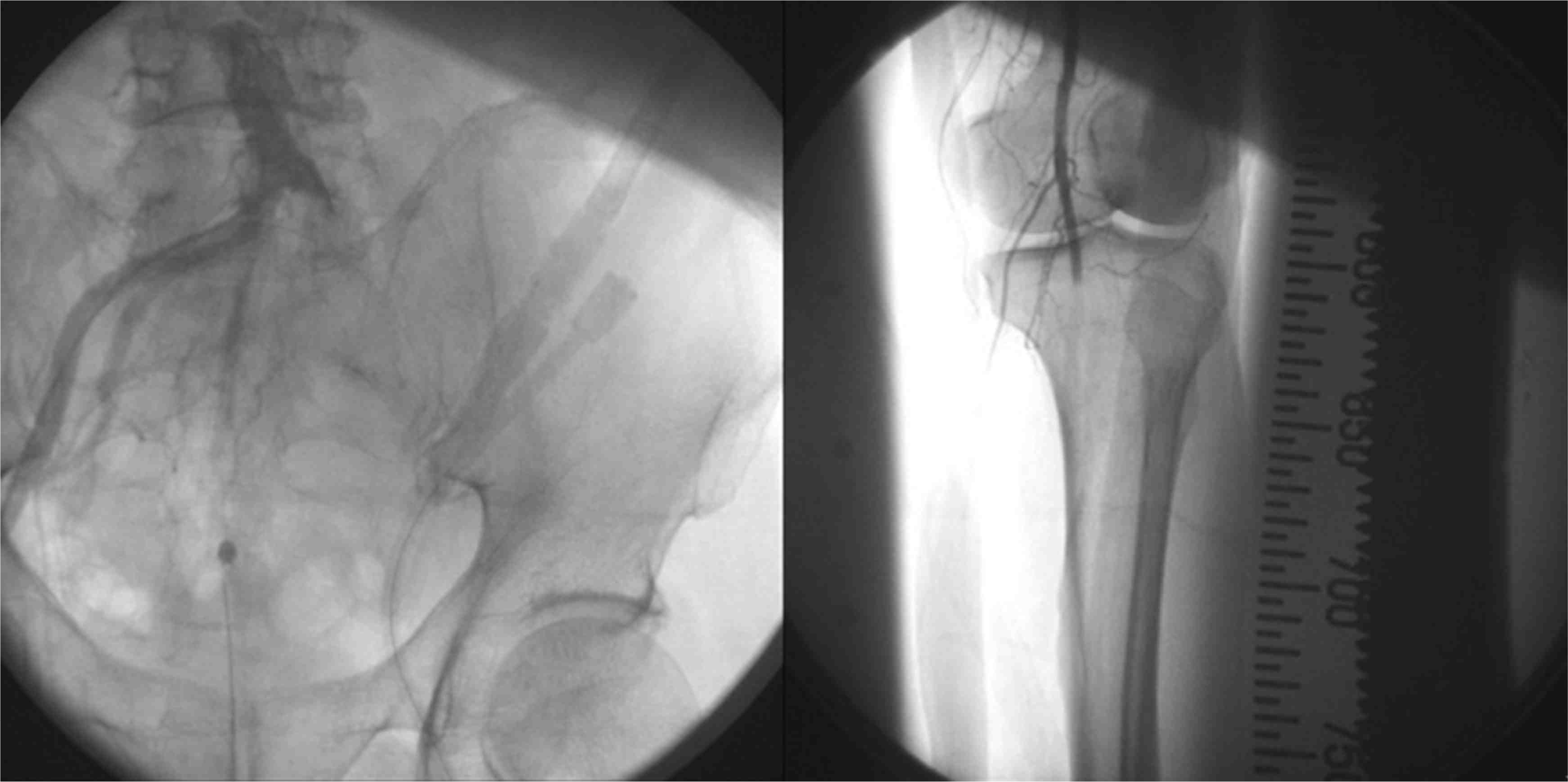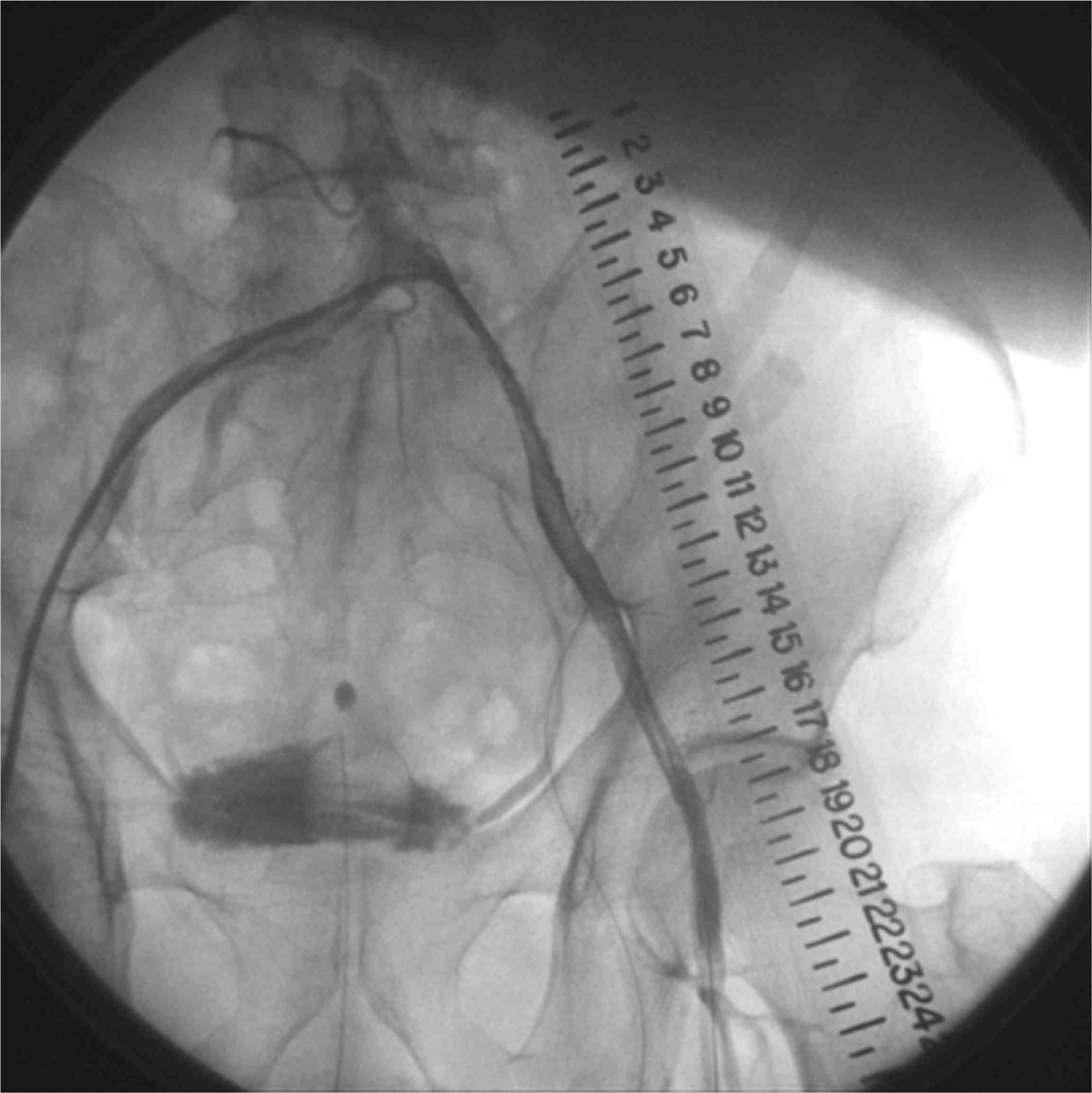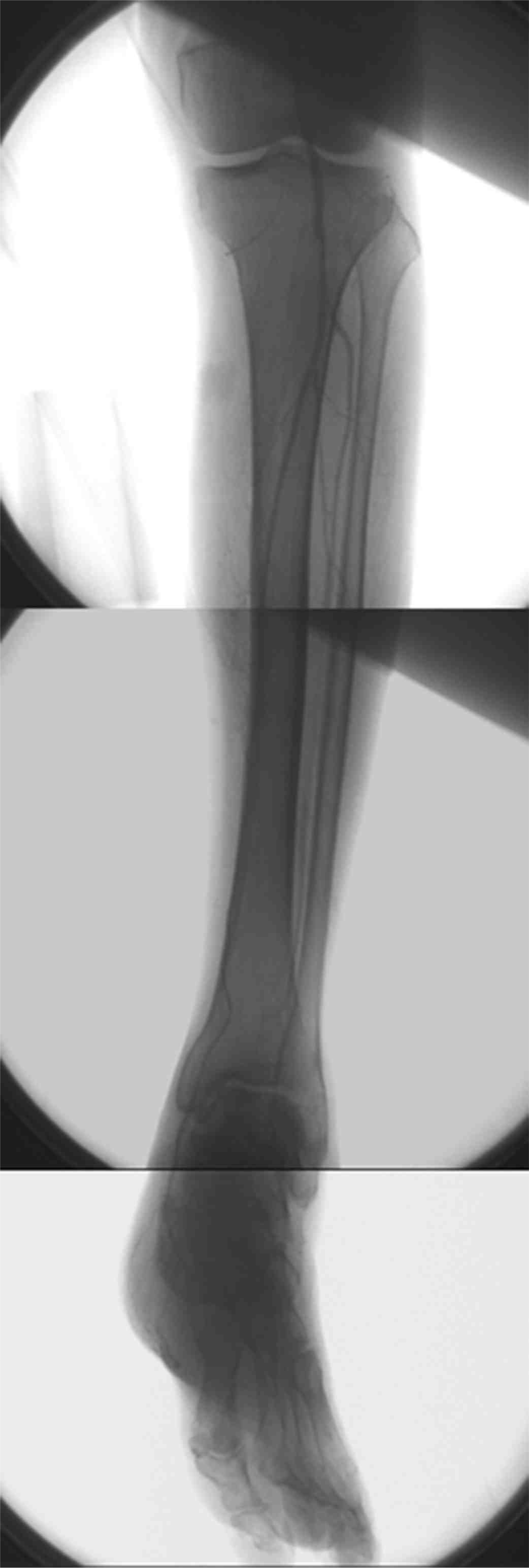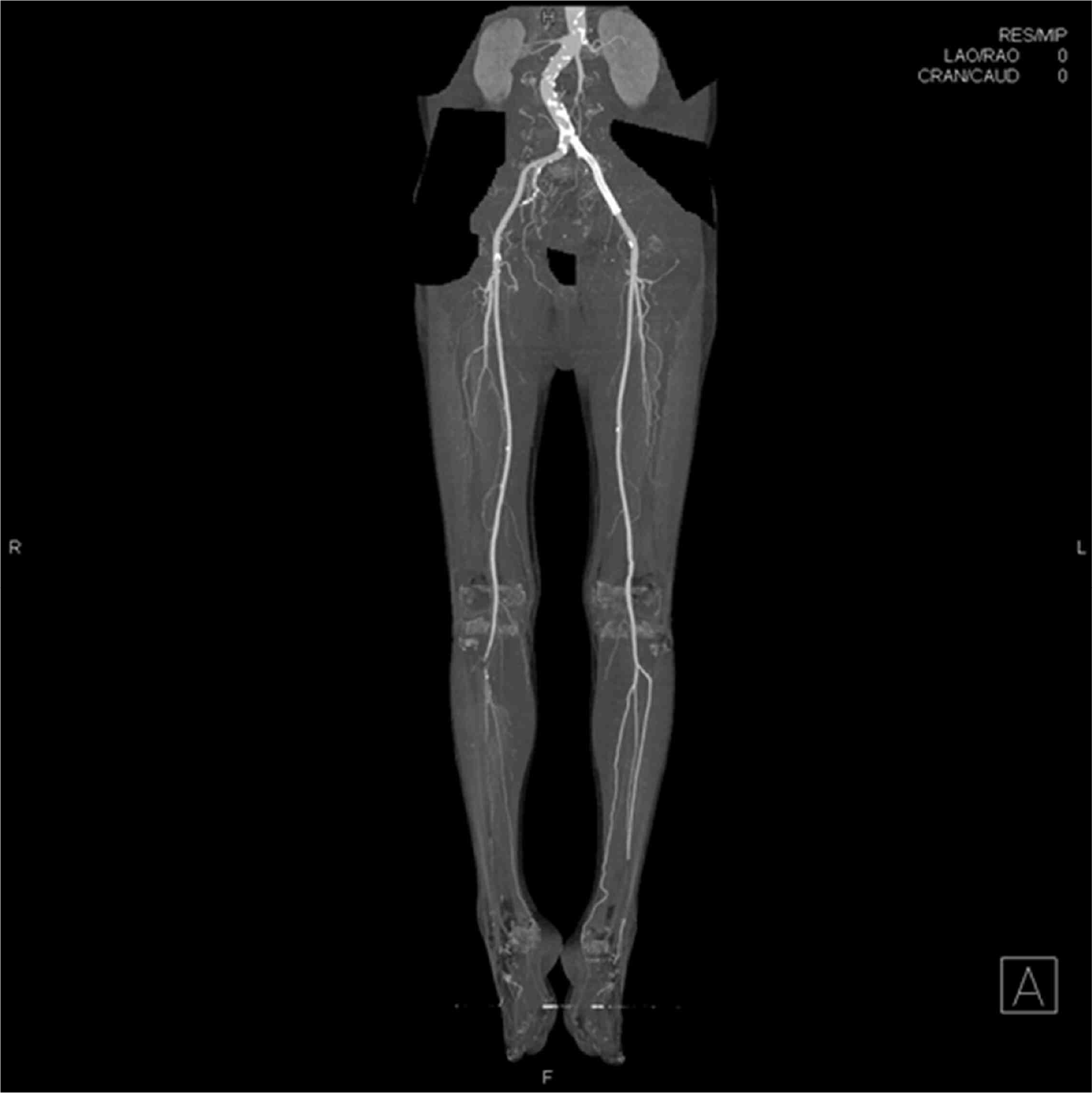Abstract
Acute limb ischemia (ALI) is a serious condition requiring prompt intervention due to a sudden decrease in limb perfusion threatening limb viability. Treatment of ALI depends on the clinical status of the affected limb and patient comorbidities. Surgical therapy has been the historical standard of care for restoring limb perfusion; however, percutaneous endovascular intervention has been shown to be a promising treatment option in selected patients of ALI at high surgical risk. We report on a case of a 75-year-old man with ALI caused by thrombotic occlusion of the suprainguinal artery, successfully treated with endovascular therapy including stent insertion and thrombus aspiration and catheter-directed urokinase infusion in view of the clinical findings and imaging studies.
Go to : 
References
1. Norgren L, Hiatt WR, Dormandy JA, Nehler MR, Harris KA, Fowkes FG, et al. Inter-society consensus for the management of peripheral arterial disease (TASC II). J Vasc Surg. 2007; 45:S5–67.

2. Hirsch AT, Haskal ZJ, Hertzer NR, Bakal CW, Creager MA, Halperin JL, et al. ACC/AHA 2005 practice guidelines for the management of patients with peripheral arterial disease (lower extremity, renal, mesenteric, and abdominal aortic): a collaborative report from the American Association for Vascular Surgery/Society for Vascular Surgery, Society for Cardiovascular Angiography and Interventions, Society for Vascular Medicine and Biology, Society of Interventional Radiology. Circulation. 2006; 113:e463–654.

4. Dormandy J, Heeck L, Vig S. Acute limb ischemia. Semin Vasc Surg. 1999; 12:148–53.
6. Costantini V, Lenti M. Treatment of acute occlusion of peripheral arteries. Thromb Res. 2002; 106:V285–94.

7. Lowe GD. Common risk factors for both arterial and venous thrombosis. Br J Haematol. 2008; 140:488–95.

8. Franchini M, Mannucci PM. Association between venous and arterial thrombosis: clinical implications. Eur J Intern Med. 2012; 23:333–7.

9. Patel NH, Krishnamurthy VN, Kim S, Saad WE, Ganguli S, Gregory Walker T, et al. Quality improvement guidelines for percutaneous management of acute lower-extremity ischemia. J Vasc Interv Radiol. 2013; 24:3–15.

10. Rutherford RB, Baker JD, Ernst C, Johnston KW, Porter JM, Ahn S, et al. Recommended standards for reports dealing with lower extremity ischemia: revised version. J Vasc Surg. 1997; 26:517–38.

11. Ouriel K, Veith FJ, Sasahara AA. A comparison of recombinant urokinase with vascular surgery as initial treatment for acute arterial occlusion of the legs. N Engl J Med. 1998; 338:1105–11.

Go to : 
 | Fig. 1.(A) Initial angiography shows total occlusion of the left common iliac artery. (B) After guide wire and glide catheter are passed the left common iliac artery lesion, angiography shows total occlusion of the popliteal artery. |
 | Fig. 2.After several aspiration thrombectomy with a 5-Fr Heartrail guiding catheter and balloon angioplasty, angiography shows significant luminal stenosis of the left common iliac artery and intraluminal filling defects in the left common and external iliac artery. |
 | Fig. 3.(A) After aspiration thrombectomy, balloon angioplasty and the stent insertion at the left common iliac artery, angiography shows good flow restoration to the distal part popliteal artery. (B) After aspiration thrombectomy, balloon angioplasty and intrathrombus urokinase injection at anterior and posterior tibial artery, angiography shows good flow restoration to the dorsalis pedis artery (white arrow head). |




 PDF
PDF ePub
ePub Citation
Citation Print
Print




 XML Download
XML Download